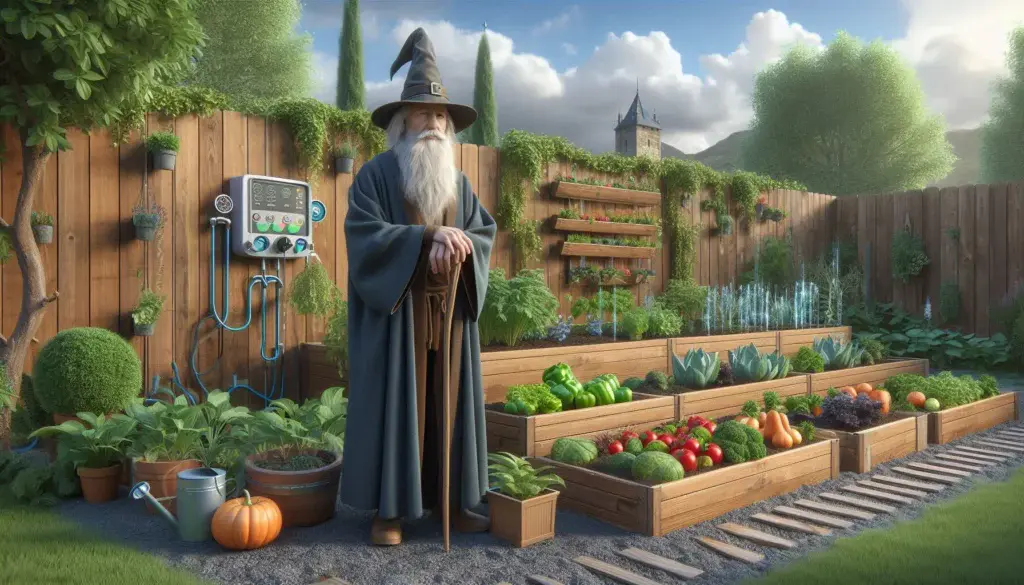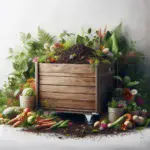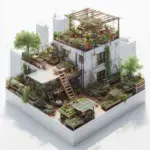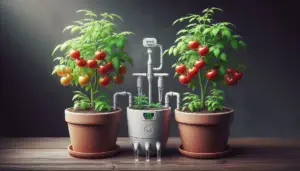 Precision gardening has become a vital concept for anyone looking to boost the efficiency and productivity of their green spaces. This method utilizes advanced techniques and tools to care for plants in a way that’s more effective and less wasteful. As gardening evolves beyond traditional methods, adopting precision techniques means ensuring that every drop of water, every spec of fertilizer contributes directly to your plant’s health.
Precision gardening has become a vital concept for anyone looking to boost the efficiency and productivity of their green spaces. This method utilizes advanced techniques and tools to care for plants in a way that’s more effective and less wasteful. As gardening evolves beyond traditional methods, adopting precision techniques means ensuring that every drop of water, every spec of fertilizer contributes directly to your plant’s health.
The impact of technology on gardening is massive. From smart seeders to soil sensors, innovations are turning this age-old hobby into a science. This shifts gardening from a labor-intensive task to a more engaging activity, allowing gardeners to optimize resources and results. People are always looking for smarter ways to manage this significant aspect of their gardening, and technology is stepping up to fill that need.
When we talk about smart watering solutions, we’re diving into a game-changer for gardeners. These systems not only help conserve water but also ensure plants receive the right amount of moisture, no more no less. It’s about using the best of technology to solve age-old problems, like overwatering or keeping plants consistently hydrated in our often-unpredictable climate and landscapes. Smart watering solutions have in many cases become essential for promoting sustainable gardening, which is more crucial now than ever.
Navigating Through Smart Irrigation Systems: Pros and Cons
Smart irrigation systems are rapidly gaining popularity among gardeners seeking efficiency and convenience. These systems rely on technology to automatically manage water application, and are tuned precisely to the needs of different plants and soil conditions. They can use weather data, sensor feedback, and soil moisture content to determine when and how much to water.
There advantages to using smart irrigation systems . For starters, they save water by adjusting to climate conditions and plant requirements. This not only conserves precious resources but can potentially lower water bills. Automated systems also reduce the time and effort needed to maintain a garden, freeing gardeners to focus on other important tasks or simply enjoy their gardens more. Another plus is the convenience of controlling them remotely, often through a smartphone app, which is a handy feature for busy individuals.
Despite these benefits, there are downsides to consider. Initial costs can be a barrier, as the technology involved isn’t cheap upfront, though it might save money in the long-term. Technical issues can also arise, from software glitches to connectivity problems, that require troubleshooting. Additionally, adjusting to the learning curve of new tech might be a challenge, especially for people who are not particularly tech-savvy.
To tackle these challenges, one approach is to start small. Invest in a modest system that manages one section of a garden, then expand as you become more comfortable with the technology. It’s also wise to keep technical support contacts handy or connect with local gardening groups who might share the same systems and can offer tips and assistance. With careful planning and a bit of patience, the transition to smart irrigation can become a smooth and rewarding experience.
Automating Garden Watering: Best Practices and Techniques
Automating garden watering has become a game-changer in modern gardening. With the right tools, maintaining an efficient watering schedule is easier than ever, making sure plants get the care they need without unnecessary effort or overexertion from gardeners.
Several smart devices are at the core of garden watering automation. Smart timers, which you can program to water plants at specific times, are straightforward to use and especially effective for those with a busy schedule. Meanwhile, sensor-based systems take it the next level—these systems understand soil moisture levels and use weather forecasts to determine the best moments for watering.
Choosing the right automation tool largely depends on your garden’s specific needs. Smart timers and moisture sensors work well in tandem, offering both scheduled and condition-based watering for best results. This ensures plants get water precisely when they need it—no more, no less. This combination can significantly optimize water usage and support healthier plant growth.
Setting up these systems involves a few technical steps but is manageable with a bit of guidance. You would start by looking at your garden’s existing layout and identifying areas with different watering needs. Then sensors are set-up and connected to a central control unit, like a smartphone app which lets you monitor and adjust settings on the fly.
Getting the most out of these systems requires routine checks to ensure everything is functioning correctly. Regular maintenance prevents minor issues from becoming major headaches, keeping things running smoothly. It’s a good idea to periodically review the system’s performance, making tweaks as necessary according to seasonal changes or shifting plant needs.
Decoding the Automatic Intelligent Plant Watering System
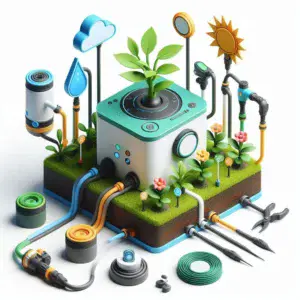
Automatic intelligent plant watering systems represent the pinnacle of modern gardening technology. They take the guesswork out of plant care by using sensors and data analytics to create a fully automated experience. These systems are designed to cater to the needs of individual plants, making them highly efficient and reliable.
The technology behind these systems is fascinating. They typically consist of sensors that measure soil moisture, temperature, and sometimes even light. This data is fed into a central control system that processes the information and determines optimal watering times and amounts. The automation extends even further, as many systems can adjust themselves based on weather forecasts or remote inputs from gardeners.
Integrating an intelligent watering system into an existing garden setup requires some planning but can be seamlessly executed. Start by surveying your garden’s layout and plant types to determine where each sensor should go. It’s crucial to position these sensors where they can deliver accurate readings, particularly in areas with plants that have varying water needs.
Regular maintenance is key to keeping the system efficient over time. Check sensors and connections periodically to ensure they’re free of dirt or debris, which can compromise accuracy. Firmware updates should also be applied as needed to keep the system running smoothly and to take advantage of new features or improvements.
Real-world applications abound for these systems. Gardeners—whether hobbyists or professionals—report remarkable improvements in water usage and plant health. They often find themselves spending less time adjusting water schedules manually, focusing instead on other aspects of plant care or simply enjoying their gardens. It’s an approach that marries tradition with innovation, bringing out the best in both worlds.
Mastering Effective Watering Techniques: The Path to Efficient Gardening
Picking the right watering technique can make a big difference in how plants grow and thrive. The best method usually comes down to the type of plants and garden layout you have. Drip irrigation, for example, delivers water directly to the roots, minimizing loss due to evaporation and ensuring that water is used efficiently.
Spray systems might work better for larger areas or lawns where even coverage is necessary. These systems are quicker to install but may not be as efficient in terms of water use if not managed properly. Soaker hoses provide deep watering with minimal runoff, making them a good choice for garden beds with dense plantings.
Understanding how plants absorb water is essential for choosing the best method. Plants draw water up through the roots, which means focusing on moistening the soil effectively and not just wetting the leaves. Less moisture on the foliage cuts down on diseases that might occur from being wet for too long.
Customizing watering techniques according to plant species can lead to improved growth and vitality. Different plants have varied water needs; for instance, succulents require less frequent watering compared to vegetables like tomatoes. Tailoring the watering approach ensures each plant gets precisely what it needs to flourish.
Beyond technique, timing plays a crucial role. Early morning watering helps reduce evaporation and allows plants to absorb moisture throughout the day. Evening watering should be done with caution to prevent sitting water from fostering fungal diseases.
Incorporating these techniques and timings into an automated system can further enhance their effectiveness. By blending automation with these careful techniques, gardeners can achieve a balance of convenience and precision, leading to healthier plants and efficient water use. It’s about creating a system where everything works in harmony, benefiting both plants and the caretaker.


